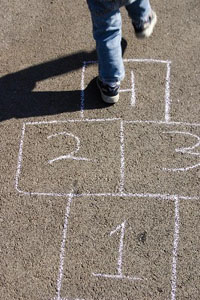Archived Content
The National Institute of Mental Health archives materials that are over 4 years old and no longer being updated. The content on this page is provided for historical reference purposes only and may not reflect current knowledge or information.
Effectiveness of Long-term Use of Antipsychotic Medication to Treat Childhood Schizophrenia is Limited
• Science Update

Few youths with early-onset schizophrenia who are treated with antipsychotic medications for up to a year appear to benefit from their initial treatment choice over the long term, according to results from an NIMH-funded study. The study was published online ahead of print May 4, 2010, in the Journal of the American Academy of Child and Adolescent Psychiatry.
Background
The NIMH Treatment of Early Onset Schizophrenia Study (TEOSS) included 116 youth between 8 and 19 years old, diagnosed with early onset schizophrenia spectrum disorder (EOSS). The TEOSS team randomly assigned the children to eight weeks of either olanzapine (Zyprexa) or risperidone (Risperdal)—both new generation atypical antipsychotics—or to the older conventional antipsychotic molindone (Moban). Response rates after eight weeks of treatment were comparable among the three medications. The results were reported in September 2008.
After the initial 8-week trial, 54 of the 116 participants entered the maintenance treatment phase in which they continued their initial medication and were monitored for up to 44 more weeks of treatment. Only 14 participants completed the additional 44 weeks of treatment.
Results of the Study
Robert Findling, M.D., of Case Western Reserve University in Cleveland, and the TEOSS team reported that the participants' treatment response tended to plateau during the follow-up, maintenance therapy period, such that most of the children did not improve beyond what they had already achieved during the initial eight weeks of treatment. In addition, most discontinued treatment during the maintenance phase, most commonly due to side effects such as weight gain, anxiety, increases in cholesterol levels, and other metabolic changes, regardless of which treatment they were receiving. None of the three medications appeared to be more effective than the others.
Significance
The findings suggest that few youths with EOSS continue treatment on the same antipsychotic medication over the long-term, with lack of effectiveness and adverse effects cited as the most common reasons for discontinuation. Most of those who initially responded to medication were able to at least maintain their initial improvements, but very few participants stayed on the medication through the 12-month study most frequently because of intolerable side effects.
What's Next
The authors conclude that more effective and safer treatments need to be developed to treat children with EOSS.
Reference
Findling R. Johnson JL, McClellan J, Frazier JA, Vitiello B, Hamer RM, Lieberman JA, Ritz L, McNamara NK, Lingler J, Hlastala S, Pierson L, Puglia M, Maloney AE, Kaufman EM, Noyes N, Sikich L. Double-blind maintenance safety and effectiveness findings from the TEOSS. Journal of the American Academy of Child and Adolescent Psychiatry. Available online May 4, 2010.
